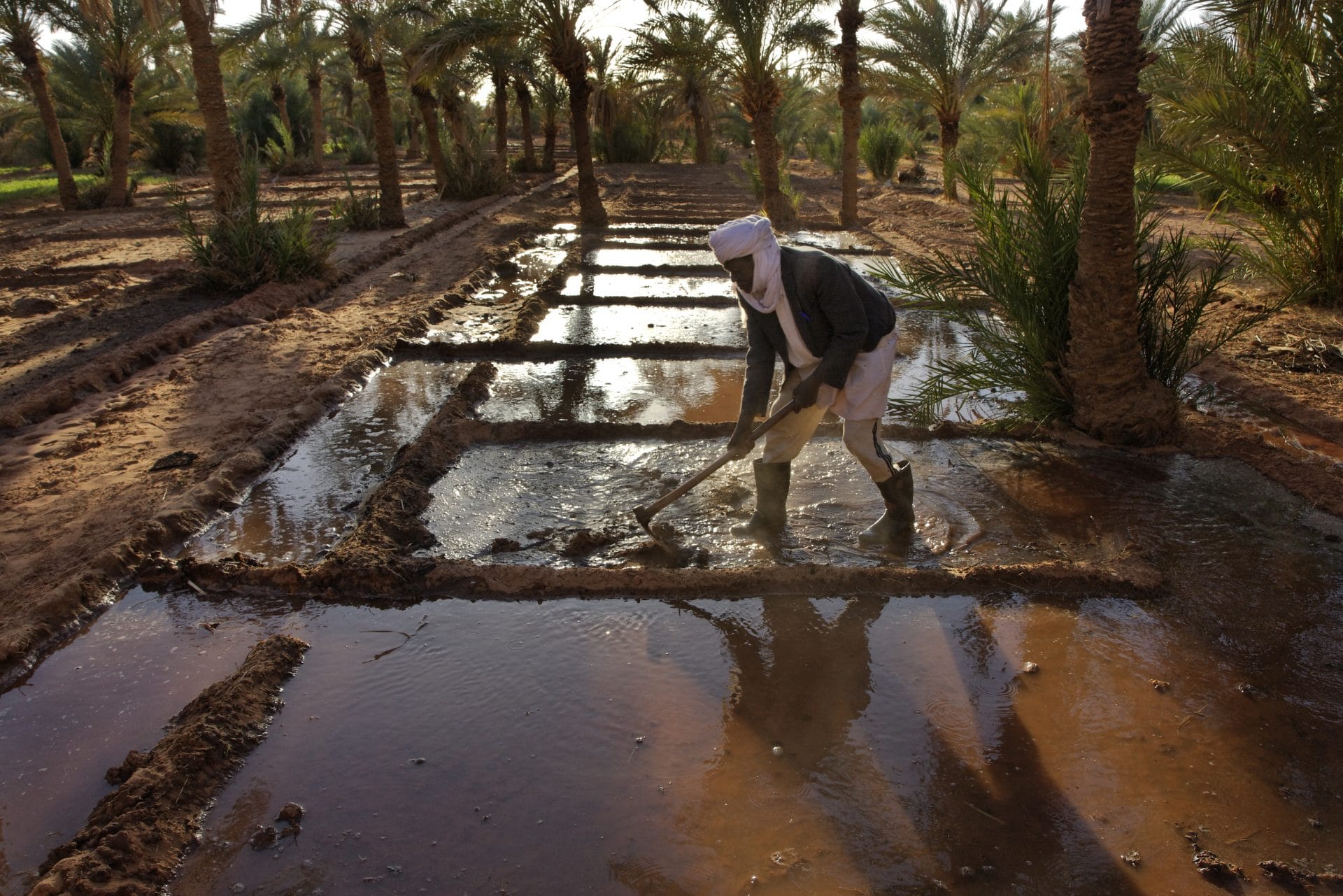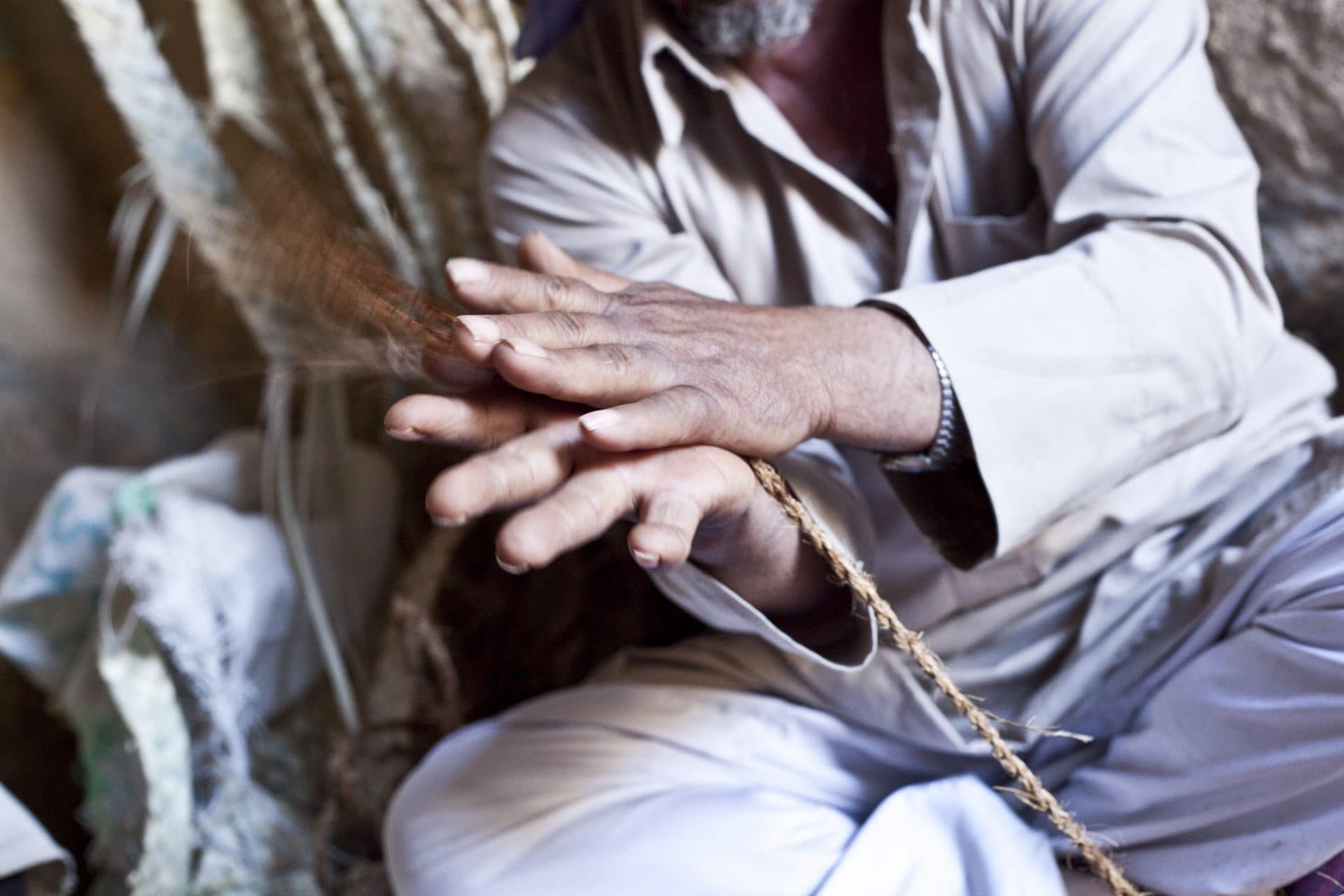Oasis
in danger

A farmer at work in the village of Sahel Alatik, busy managing the traditional irrigation, by flooding, of his date palm grove. He opens and closes in sequence a number of small breaches in the earth borders dividing each section. This allows water entry and its subsequent outflow and prevents – by washing them away –the accumulation of salts on the ground.

In this Oasis, inhabited since 2000 BC, traditions are ancient and renowned. Here, the manufacturing of the date palm leaf – featured in its early stage – is a job reserved exclusively for men. The interlaced palm fronds will become a mat used in a myriad of ways: in construction, for soundproofing, to insulate, subdivide and cool rooms, and for containers of daily use. Carpenters have also always worked with palm trunks to create virtually every item found in homes. The manufacturing of salt blocs – extracted from the lake shores in the depression – for furnishings, is another characteristic activity in Siwa Oasis, as well as jewellery which is made in silver, according to the Berber use. For women their principle craft consists in embroidery, which adopts designs that have been transmitted since 1000 AD, when the Siwi people were already settled in the citadel of Shali.